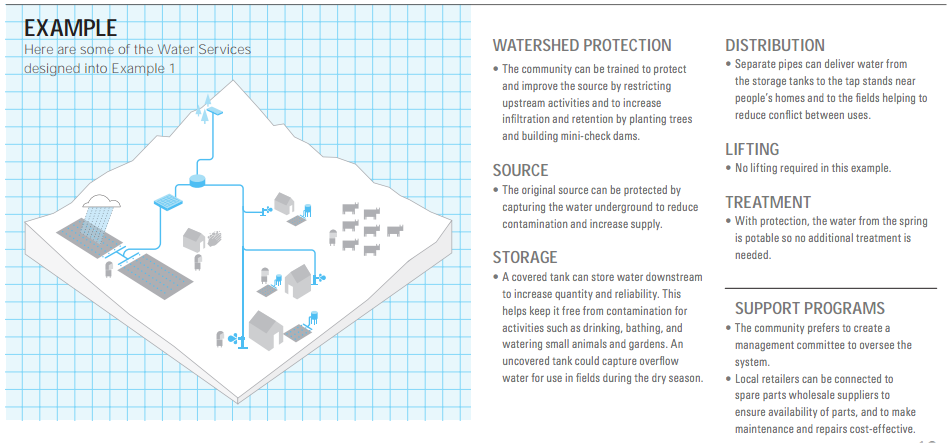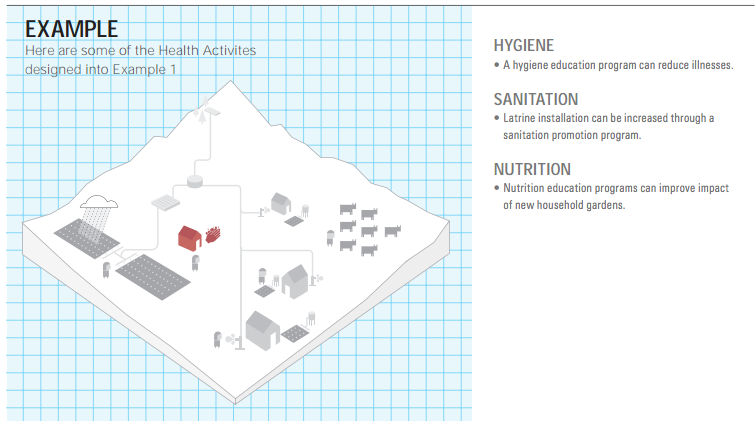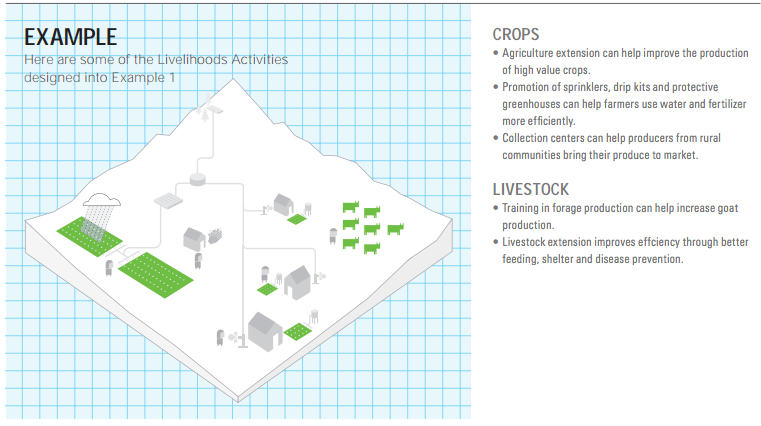Difference between revisions of "Water Portal / Rainwater Harvesting / Multiple Use Services (MUS)"
| (24 intermediate revisions by 3 users not shown) | |||
| Line 1: | Line 1: | ||
| − | {{Language-box|english_link=Multiple Use Services (MUS)|french_link=Les Services d’eau à usages multiples (MUS)|spanish_link=Servicios para usos múltiples (MUS)|malayalam_link=വിവിധോപയോഗ ജല സേവനങ്ങള് (MUS)|korean_link=다용도 서비스(MUS) | chinese_link=多用途服务 (MUS)}} | + | {{Language-box|english_link=Water Portal / Rainwater Harvesting / Multiple Use Services (MUS)|french_link=Les Services d’eau à usages multiples (MUS)|spanish_link=Servicios para usos múltiples (MUS)|hindi_link=वाटर पोर्टल / वर्षाजल संचयन / बहुउपयोगी सेवा (एमयूएस)|malayalam_link=വിവിധോപയോഗ ജല സേവനങ്ങള് (MUS) | tamil_link=Coming soon| swahili_link=Lango la Maji / Uvunaji wa Maji ya Mvua / Huduma ya Matumizi Mengi (HMM) | korean_link=다용도 서비스(MUS) | chinese_link=多用途服务 (MUS) | indonesian_link=Layanan Multiguna (Multiple Use Services, MUS) | japanese_link= 複合利用サービス(MUS)}} |
[[Image:Multiple Use Services (MUS) - Nepal.jpg|thumb|right|200px|A multi-use water system in Nepal provides safe drinking water and drip irrigation for farmers, helping them adapt to climate change. Photo: [http://www.ens-newswire.com/ens/nov2010/2010-11-22-03.html USAID and Winrock International]]] | [[Image:Multiple Use Services (MUS) - Nepal.jpg|thumb|right|200px|A multi-use water system in Nepal provides safe drinking water and drip irrigation for farmers, helping them adapt to climate change. Photo: [http://www.ens-newswire.com/ens/nov2010/2010-11-22-03.html USAID and Winrock International]]] | ||
| − | Multiple-use water services (MUS) is an innovative approach to water services. It unlocks new investment opportunities for poverty reduction and gender equity in peri-urban and rural areas. MUS takes people’s multiple water needs as the starting point of planning and design of new systems and upgrades. Universally, water users already use ‘domestic’ systems or ‘irrigation’ systems for multiple purposes, whether legal or not. By planning for these multiple uses, many more benefits from investments in infrastructure can be realized: health, freedom from domestic chores, food and income and gender equity. | + | '''Multiple-use water services (MUS)''' is an innovative approach to water services. It unlocks new investment opportunities for poverty reduction and gender equity in peri-urban and rural areas. MUS takes people’s multiple water needs as the starting point of planning and design of new systems and upgrades. Universally, water users already use ‘domestic’ systems or ‘irrigation’ systems for multiple purposes, whether legal or not. By planning for these multiple uses, many more benefits from investments in infrastructure can be realized: health, freedom from domestic chores, food and income and gender equity. |
<br> | <br> | ||
<font size="3" color="#995e8c">Multiple-use water services is a holistic approach to <br>sustainable water services that improves health and livelihoods.</font> | <font size="3" color="#995e8c">Multiple-use water services is a holistic approach to <br>sustainable water services that improves health and livelihoods.</font> | ||
| − | [[Image:MUS graphic.png|thumb|none|500px|Graphic: [ | + | [[Image:MUS graphic.png|thumb|none|500px|Graphic: [https://www.winrock.org/topic/water Winrock International]]] |
====Homestead-scale MUS: 50 – 200 litres per capita per day==== | ====Homestead-scale MUS: 50 – 200 litres per capita per day==== | ||
| Line 41: | Line 41: | ||
important part of creating a successful and sustainable service by enabling a community to use the right technology for the right uses. Equally important is choosing the right supporting programs (governance, management, and training), that will enable long-term sustainability of the water services. | important part of creating a successful and sustainable service by enabling a community to use the right technology for the right uses. Equally important is choosing the right supporting programs (governance, management, and training), that will enable long-term sustainability of the water services. | ||
| − | [[File: MUS water chart.png|thumb|none|500px|Click to zoom. Chart: [ | + | [[File: MUS water chart.png|thumb|none|500px|Click to zoom. Chart: [https://www.winrock.org/topic/water Winrock International]]] |
A key element of support programs is management. Work with water users to design a management structure that takes into account their resources and constraints. Some options for a management structure are community (management by committee or delegation to an entrepreneur or enterprise) or private (management by individual, household, or small group). | A key element of support programs is management. Work with water users to design a management structure that takes into account their resources and constraints. Some options for a management structure are community (management by committee or delegation to an entrepreneur or enterprise) or private (management by individual, household, or small group). | ||
| Line 47: | Line 47: | ||
'''2. Health:''' By only providing potable water, you can make a health impact. To the extent that project resources permit, designing additional Health Activities (hygiene, sanitation, and nutrition) can maximize the overall health impacts of the new water service. Information learned in the Assessment process along with the results from the Design of Water Services can inform which Health Activities to include in the project. | '''2. Health:''' By only providing potable water, you can make a health impact. To the extent that project resources permit, designing additional Health Activities (hygiene, sanitation, and nutrition) can maximize the overall health impacts of the new water service. Information learned in the Assessment process along with the results from the Design of Water Services can inform which Health Activities to include in the project. | ||
| − | [[File: MUS health chart.png|thumb|none|500px|Click to zoom. Chart: [ | + | [[File: MUS health chart.png|thumb|none|500px|Click to zoom. Chart: [https://www.winrock.org/topic/water Winrock International]]] |
'''3. Livelihoods:''' Simply by providing holistic water services, livelihoods will be improved. To the extent that project resources permit, designing additional Livelihoods Activities (agriculture, livestock, trade) can broaden the impact of your project by increasing incomes and enabling access to | '''3. Livelihoods:''' Simply by providing holistic water services, livelihoods will be improved. To the extent that project resources permit, designing additional Livelihoods Activities (agriculture, livestock, trade) can broaden the impact of your project by increasing incomes and enabling access to | ||
opportunities like education. | opportunities like education. | ||
| − | [[File: MUS livelihoods chart.png|thumb|none|500px|Click to zoom. Chart: [ | + | [[File: MUS livelihoods chart.png|thumb|none|500px|Click to zoom. Chart: [https://www.winrock.org/topic/water Winrock International]]] |
===Field experiences=== | ===Field experiences=== | ||
| Line 72: | Line 72: | ||
===Manuals, videos and links=== | ===Manuals, videos and links=== | ||
* [http://www.nwp.nl/_docs/Smart-solutions-3R.spread.pdf 3R Smart Solutions] | * [http://www.nwp.nl/_docs/Smart-solutions-3R.spread.pdf 3R Smart Solutions] | ||
| − | * PDF: [ | + | * PDF: [https://www.spring-nutrition.org/sites/default/files/publications/reports/spring_report_multiple-use_water_services.pdf Multiple-Use Water Services: Toward a Nutrition-Sensitive Approach]. IFAD. |
* [http://www.musgroup.net/ Multiple Use Water Services Group]. | * [http://www.musgroup.net/ Multiple Use Water Services Group]. | ||
| Line 83: | Line 83: | ||
* IWMI report - [http://www.iwmi.cgiar.org/publications/iwmi-research-reports/iwmi-research-report-98/ Multiple-Use water services to advance the millennium development goals]. | * IWMI report - [http://www.iwmi.cgiar.org/publications/iwmi-research-reports/iwmi-research-report-98/ Multiple-Use water services to advance the millennium development goals]. | ||
| − | * | + | * Moriarty, P., Butterworth, J., Koppen, B. van. 2004. [http://www.ircwash.org/resources/beyond-domestic-case-studies-poverty-and-productive-uses-water-household-level Beyond domestic : case studies on poverty and productive uses of water at the household level], IRC Technical Papers Series 41. |
| − | |||
* Schouten, T.; Moriarty, P. 2003. [http://www.ircwash.org/resources/community-water-community-management-system-service-rural-areas Community water, community management – From system to service in rural areas]. The Hague, The Netherlands: IRC International Water and Sanitation Centre and ITDG | * Schouten, T.; Moriarty, P. 2003. [http://www.ircwash.org/resources/community-water-community-management-system-service-rural-areas Community water, community management – From system to service in rural areas]. The Hague, The Netherlands: IRC International Water and Sanitation Centre and ITDG | ||
| − | * Nepal (SIMI) Smallholder Market Initiative. 2004. Process and impact study of the multiple-use (hybrid) gravity water supply schemes in Palpa and Syangja Districts of West Nepal. Kathmandu: Eco-Tech consult (P) Ltd. S. | + | * Nepal (SIMI) Smallholder Market Initiative. 2004. Process and impact study of the multiple-use (hybrid) gravity water supply schemes in Palpa and Syangja Districts of West Nepal. Kathmandu: Eco-Tech consult (P) Ltd. S. [http://pdf.usaid.gov/pdf_docs/PDACP099.pdf Nepal Smallholder Irrigation Market Initiative (SIMI)]. |
| − | |||
* [http://www.iwmi.cgiar.org/Publications/Water_Policy_Briefs/PDF/wpb18.pdf Taking a multiple-use approach to meeting the water needs of poor communities brings multiple benefits]. IWMI (2006) | * [http://www.iwmi.cgiar.org/Publications/Water_Policy_Briefs/PDF/wpb18.pdf Taking a multiple-use approach to meeting the water needs of poor communities brings multiple benefits]. IWMI (2006) | ||
===Acknowledgements=== | ===Acknowledgements=== | ||
* Models For Implementing Multiple-Use Water Supply Systems For Enhanced Land And Water Productivity, Rural Livelihoods And Gender Equity – Multiple Use Systems (MUS). [http://ongoing-research.cgiar.org/factsheets/models-for-implementing-multiple-use-water-supply-systems-for-enhanced-land-and-water-productivity-rural-livelihoods-and-gender-equity-multiple-use-systems-mus/ Ongoing research - CIGAR.] | * Models For Implementing Multiple-Use Water Supply Systems For Enhanced Land And Water Productivity, Rural Livelihoods And Gender Equity – Multiple Use Systems (MUS). [http://ongoing-research.cgiar.org/factsheets/models-for-implementing-multiple-use-water-supply-systems-for-enhanced-land-and-water-productivity-rural-livelihoods-and-gender-equity-multiple-use-systems-mus/ Ongoing research - CIGAR.] | ||
| − | * [http://www. | + | * [http://www.jsi.com/JSIInternet/Inc/Common/_download_pub.cfm?id=15089&lid=3 A Guide to Multiple-Use Water Services]. Winrock International. |
| − | |||
| − | |||
| − | |||
Latest revision as of 00:51, 26 February 2016
| |
|
|
|
|
|
|
|
|
|

Multiple-use water services (MUS) is an innovative approach to water services. It unlocks new investment opportunities for poverty reduction and gender equity in peri-urban and rural areas. MUS takes people’s multiple water needs as the starting point of planning and design of new systems and upgrades. Universally, water users already use ‘domestic’ systems or ‘irrigation’ systems for multiple purposes, whether legal or not. By planning for these multiple uses, many more benefits from investments in infrastructure can be realized: health, freedom from domestic chores, food and income and gender equity.
Multiple-use water services is a holistic approach to
sustainable water services that improves health and livelihoods.

Contents
Homestead-scale MUS: 50 – 200 litres per capita per day
Whenever water is available near homes and on adjoining lands, or ‘homesteads’, people use such water for domestic and many productive uses. This empirical relationship between water uses and availability is depicted in the ‘multiple-use water ladder’. The policy recommendation is to enable poor people ‘to climb the water ladder’ and to provide 50-200 liters per capita per day. Out of this, 3-5 liters per capita per day should be safe for drinking. Income generated enable repayment of most multiple-use systems investments within three years. Homestead-scale MUS is especially beneficial for women, who are disproportionately responsible for domestic water supplies and tend to have a stronger say over homestead production. The land-poor, who only have access to homestead land, also benefit.
Community-scale MUS: local-level integrated water resource management
Here MUS takes communities as entry point of water services. It holistically considers their multiple water uses (domestic, irrigation, animal watering, tree-growing, fisheries, enterprises, ceremonies, environment) from multiple water sources (rain, surface water, groundwater, wetlands) at multiple sites (homesteads, fields, open access). This integrated water resource management at the local level is (potentially) considerably more cost-effective and sustainable than single-use water services.
| Advantages | Disadvantages |
|---|---|
| - Gender-friendly, because the needs of both men and women are considered. - Enhancing willingness and ability to pay, which helps financing of public schemes and upscaling of self-financed schemes. |
- Most water sector projects are not organised to include multiple use, so planning is "new territory" for some. - Sometimes when multiple use ideas are outside of the original water project plan, they are prevented, declared "illegal" with fines. |
What does a multiple-use water service look like?
Once you understand the people, their needs and desires, and the sources, you can design an integrated water service with supporting health and livelihood components. How do you decide on the right combination of technologies and supporting programs?
1. Water: Multiple-use water services are not about just repeating the same technology throughout a community. Choosing the right technology can be an important part of creating a successful and sustainable service by enabling a community to use the right technology for the right uses. Equally important is choosing the right supporting programs (governance, management, and training), that will enable long-term sustainability of the water services.

A key element of support programs is management. Work with water users to design a management structure that takes into account their resources and constraints. Some options for a management structure are community (management by committee or delegation to an entrepreneur or enterprise) or private (management by individual, household, or small group).
2. Health: By only providing potable water, you can make a health impact. To the extent that project resources permit, designing additional Health Activities (hygiene, sanitation, and nutrition) can maximize the overall health impacts of the new water service. Information learned in the Assessment process along with the results from the Design of Water Services can inform which Health Activities to include in the project.

3. Livelihoods: Simply by providing holistic water services, livelihoods will be improved. To the extent that project resources permit, designing additional Livelihoods Activities (agriculture, livestock, trade) can broaden the impact of your project by increasing incomes and enabling access to opportunities like education.

Field experiences
In Nepal, multiple-use water systems were introduced by Nepal Smallholder Market Initiative (SIMI), International Development Enterprise (IDE), and Winrock. The systems consist of collection tanks at springs or small streams diversions, which deliver water to a reservoir near a village by gravity flow through a pipe. These systems serve 10-40 households, which use the water both for domestic purposes and horticulture. The introduction of drip irrigation systems ensured an efficient use of the water and better plant growth. Sixty percent of drip irrigation users apply water from the domestic system.
RSR project
 WASH Media Forum |
Manuals, videos and links
- 3R Smart Solutions
- PDF: Multiple-Use Water Services: Toward a Nutrition-Sensitive Approach. IFAD.
- Multiple Use Water Services Group.
Water System (MUS) Program |
with a rope pump |
video |
- IWMI report - Multiple-Use water services to advance the millennium development goals.
- Moriarty, P., Butterworth, J., Koppen, B. van. 2004. Beyond domestic : case studies on poverty and productive uses of water at the household level, IRC Technical Papers Series 41.
- Schouten, T.; Moriarty, P. 2003. Community water, community management – From system to service in rural areas. The Hague, The Netherlands: IRC International Water and Sanitation Centre and ITDG
- Nepal (SIMI) Smallholder Market Initiative. 2004. Process and impact study of the multiple-use (hybrid) gravity water supply schemes in Palpa and Syangja Districts of West Nepal. Kathmandu: Eco-Tech consult (P) Ltd. S. Nepal Smallholder Irrigation Market Initiative (SIMI).
- Taking a multiple-use approach to meeting the water needs of poor communities brings multiple benefits. IWMI (2006)
Acknowledgements
- Models For Implementing Multiple-Use Water Supply Systems For Enhanced Land And Water Productivity, Rural Livelihoods And Gender Equity – Multiple Use Systems (MUS). Ongoing research - CIGAR.
- A Guide to Multiple-Use Water Services. Winrock International.
